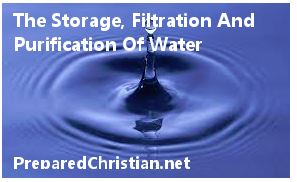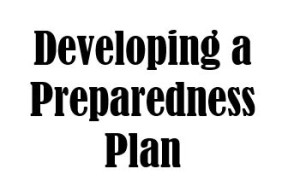
Water might be the most important part of a preparedness plan but food storage is the most complex. With water, once you know where to find it, how to purify and store it you pretty much have it nailed. Because food storage is so involved I am going to break it up into manageable segments.
First I’ll cover why you should store food and food storage rules and principals.
Why store food?
As I wrote in “Should You Prepare? Part One and Part Two. Most of us carry multiple types of insurance incase we get an in accident, or become ill. Do you plan on getting in a car accident? Or how about getting sick enough to need to see a doctor? Nope, me either, yet we pay for this insurance every month just in case.
Now how many times is your family going to eat this week? A family of four eating three times a day will eat 84 meals, that’s not counting snacks. Yet the average family has less than a weeks worth of food stored. To me its just prudent to have an insurance policy that will guarantee my family will be able to continue doing something we do multiple times a day?
We have become a society dependant on a grocery store that uses “just in time” delivery system. The process of getting food from harvest (from places all around the world) to your table is very complex. The more complex something is, the more susceptible it is to failure. Failures caused by things such as not enough rain, wildfires, blight, price of oil and many more.
Another reason to store food now is that the price of it is going up now as shown in this Secret Wal-Mart Survey Shows Inflation Already Here, and many are expecting hyperinflation. Even if we only experience normal inflation, the prices today are probably still going to be lower than they will in a few months. Since much of the food you store will be eaten anyway, this is a way to save money. It has not happened in America to any large extent, but there have been many countries suffering from food shortages. Just search for “Global food shortage” in your favorite search engine, the amount of sites is staggering. Some of the information may be a year or two old, but things are getting worse, not better. Here are just two stories from mainstream sites; one from the Financial Post that says Forget oil, the new global crisis is food And another from the Washington Post that states Global Food Crisis: The new world of soaring food prices.
Food Storage Rules:
What makes a food “shelf stable”?
A shelf stable food is one that will not spoil for at least six months without refrigeration, when packaged and stored correctly. Some examples are canned vegetables, canned meats, white rice, dried beans, pasta and sugar.
FIFO: First in, first out.
This just means when you buy new food put it behind the old food to ensure the older food gets consumed first.
Store what you eat and eat what you store.
This is one of the core tenants of preparedness, or the golden rule of prepping. How do you put this into practice? Grab your prepping notebook and every time anyone uses a shelf stable food write it down, do this for two weeks. These are the foods that you should store and rotate.
This can work with frozen food as well, but if the power goes out, you have a limited amount of time before the food spoils. That is unless you have a generator to keep the fridge and freezer running.
There is caveat with “store what you eat, eat what you store”, I may catch some flak for saying this, but it doesn’t work for everyone. By that I mean, that it is not feasible to store the kinds of food they consume on a daily basis.
Many years ago, people cooked much of their food from scratch. Today, many meals are eaten out, or something that is precooked is thrown in the oven to reheat. I know many different kinds of people fall into this category, everyone from single parents, to folks with busy schedules. I’m not saying its right or wrong, heck my family falls into this category for a few different reasons.
How should people in this category prep? I can only tell you what we have done, which one of the things we have done is store some staples such as beans, rice, wheat berries, salt, sugar and other staples, stored in Mylar bags, with oxygen absorbers. Stored this way and kept in a cool dark room the shelf life is very long. I’ll cover this process soon.
Critics of storing foods that are not a part of our normal diet will say that eating foods that we don’t normally eat, like red beans and rice, will be a shock to our systems. While this may be true, it’s less of a shock then starving. I can also mitigate the shock with some over the counter medicines.
Is this the ideal way to stock up? Nope. Will we have wasted some money and have to give away or throw some of the food we have stored? Possibly, but I look at it like this. I spent roughly $100 on car insurance for my family last month. None of us got in an accident; do I think the money was wasted? Heck no, my peace of mind is worth that and more.
My wife and I have also purchased some books like “The Amazing Wheat Book“and “ Making the most of basics”. Make a point of learning to cook with basics, even if it’s just an occasional meal. Cooking with basics is like any other skill in prepping, it’s better to own the skill, before you need to rely on the skill.
Here are the links to the other food storage articles.
Food Storage Part One: Why Store Food And The Rules For It.
Food Storage Part Two: The Kind Of Foods That You Can Store
Food Storage Part Three: Shelf Life of Staples.
Food Storage Part Four: The Process and Enemies of Food Storage.
Food Storage Part Five: How much food should you store and where should you put it all?
Food Storage Part Six: Tips On Stocking Up and Affording it all.
Food Storage Part Seven: Food Boredom to Survival Cooking .
Please click here to vote for Prepared Christian as a top Prepper site!
If you liked this article please think about sharing it on the social media listed below, thanks!





